
Dear Readers,
Mahendras has started special quizzes for IBPS & SBI Exam so that you can practice more and more to crack the examination. This IBPS & SBI Exam special quiz series will mold your preparations in the right direction and the regular practice of these quizzes will be really very helpful in scoring good marks in the Examination. Here we are providing you the important question of reasoning ability for the IBPS & SBI Exam.
Q.1-5. Study the following information carefully to answer the following question.
There are eight persons i.e. A, B, C, D, E, F, G and H who lives in a multi-story building such that the ground floor of the building is numbered 1 and above it 2nd floor and so on till the top floor which is numbered 8. Only one person lives between B and D. Two persons live between D and E, who lives one of the floors below A. Three persons live between H and E. E lives on an even-numbered floor. G lives immediately above C. There are three persons who live between B and A. Both B and A live on an odd-numbered floor.
निम्नलिखित प्रश्न का उत्तर देने के लिए निम्नलिखित जानकारी का ध्यानपूर्वक अध्ययन करें।
आठ व्यक्ति अर्थात् : A, B, C, D, E, F, G और H बहुमंजिला इमारत में इस तरह से रहते हैं कि सबसे निचले तल की संख्या 1 और उससे ऊपर के तल की संख्या 2 और आगे इसी तरह से शीर्ष तल की संख्या 8 है। B और D के बीच में केवल एक व्यक्ति रहता है। D और E, जो A के नीचे किसी एक तल पर रहता है, उनके बीच में दो व्यक्ति रहते हैं। H और E के बीच में तीन व्यक्ति रहते हैं। E, सम संख्या वाले तल पर रहता है। G, C के ठीक ऊपर रहता है। B और A के बीच में तीन व्यक्ति रहते हैं। B और A दोनों विषम संख्या वाले तल पर रहते हैं।
Q.1. Who among the following lives on the second floor of the building?
इमारत की दूसरी मंजिल पर निम्नलिखित में से कौन रहता है?
(1) A
(2) G
(3) D
(4) F
(5) None of these/इनमें से कोई नहीं
Q.2. D lives on which of the following floor?
(1) 1st Floor
(2) 3rd Floor
(3) 5th Floor
(4) 7th Floor
(5) None of these
Q.2. D, निम्नलिखित में से किस तल पर रहता है?
(1) पहले तल
(2) तीसरे तल
(3) पांचवें तल
(4)सातवें तल
(5) इनमें से कोई नहीं
Q.3. Who among the following lives immediately below E?
निम्नलिखित में से कौन E के ठीक नीचे रहता है?
(1) F
(2) A
(3) B
(4) C
(5) None of these/इनमें से कोई नहीं
Q.4. How many persons live between F and G?
(1) Two
(2) One
(3) More than four
(4) Four
(5) None of these
Q.4. F और G के बीच में कितने व्यक्ति रहते हैं?
(1) दो
(2) एक
(3) चार से अधिक
(4)चार
(5) इनमें से कोई नहीं
Q.5. Who among the following lives on the top floor?
निम्नलिखित में से कौन शीर्ष तल पर रहता है?
(1) A
(2) H
(3) D
(4) C
(5) None of these/इनमें से कोई नहीं
Q.6-10. In each of the question below is given some statements followed by some conclusions. You have to take the given statements to be true even if they seem to be at variance from commonly known facts. Read all the conclusions and then decide which of the given conclusions logically does not follow from the given statements disregarding commonly known facts.
नीचे दिए गए प्रत्येक प्रश्न में, कुछ कथन के बाद कुछ निष्कर्ष दिए गए हैं। आपको दिए गए सभी कथनों को सत्य मानना है भले ही वे सर्वज्ञात तथ्यों से भिन्न प्रतीत होते हों। सभी निष्कर्षों का अध्ययन कीजिए और इसके बाद निर्णय लेना है कि दिए गए कौन से निष्कर्ष दिए गए कथनों, जो आमतौर पर ज्ञात तथ्यों की उपेक्षा करते हैं, का तार्किक रुप से अनुसरण नहीं करते हैं।
Q.6. Statements:
All months are weeks.
Some week are day.
Some month are year.
No Decade is a Day.
Conclusions:
I. Some week are not Decade.
II. Some Year are not Decade.
III. Some Year are week.
IV. Some Year are Day.
(1) Only I and II
(2) None of these
(3) Only II
(4) Only II and III
(5) Only IV
कथन:
सभी माह, सप्ताह हैं।
कुछ सप्ताह, दिन हैं।
कुछ माह, वर्ष हैं।
कोई दशक, दिन नहीं है।
निष्कर्ष:
I. कुछ सप्ताह, दशक नहीं है।
II. कुछ वर्ष, दशक नहीं हैं।
III. कुछ वर्ष, सप्ताह हैं।
IV. कुछ वर्ष, दिन हैं।
(1) केवल I और II
(2) इनमें से कोई नहीं
(3) केवल II
(4) केवल II और III
(5) केवल IV
Q.7. Statements:
Some tanks are jars.
Some jars are bucket.
All buckets are baskets.
No baskets is bottle.
Conclusion:
I. All tanks being jars is a possibility.
II. All jars being bottle is a possibility.
III. Some bucket are not bottle.
IV. No tanks is baskets.
(1) Only IV
(2) Only II and IV
(3) Only II
(4) Only III and IV
(5) None of the above
कथन :
कुछ टैंक, जार हैं।
कुछ जार, बकेट हैं।
सभी बकेट, बास्केट हैं।
कोई बास्केट, बोटल नहीं हैं।
निष्कर्ष :
I. सभी टैंक के जार होने की सम्भावना है।
II. सभी जार के बोतल होने की सम्भावना है।
III. कुछ बकेट, बोतल नहीं हैं।
IV. कोई टैंक, बास्केट नहीं है।
(1) केवल IV
(2) केवल II और IV
(3) केवल II
(4) केवल III और IV
(5) उपर्युक्त में से कोई नहीं
Q.8. Statements:
Some trees are flowers.
Some plants are flowers.
All flowers are roots.
No leaf is plant.
Conclusion:
I. No leaf is tree.
II. Some roots are not leaf.
III. Some roots are flower.
IV. Some plant are not tree.
(1) All except IV
(2) Only I and II
(3) Only II
(4) Only I and IV
(5) None of the above
कथन:
कुछ ट्री, फ्लावर हैं।
कुछ प्लांट, फ्लावर हैं।
सभी फ्लावर, रूट हैं।
कोई लीफ, प्लांट नहीं है।
निष्कर्ष :
I. कोई लीफ, ट्री नहीं है।
II. कुछ रूट, लीफ नहीं हैं।
III. कुछ रूट, फ्लावर हैं।
IV. कुछ प्लांट, ट्री नहीं हैं।
(1) IV को छोड़कर सभी
(2) केवल I और II
(3) केवल II
(4) केवल I और IV
(5)उपर्युक्त में से कोई नहीं
Q.9. Statements:
Some A are B.
Some B are C.
All C are D.
No B is E.
Conclusion:
I. All A being D is a possibility.
II. Some B are D.
III. Some D are not E.
IV. No A is E.
(1) Only IV
(2) Only II and IV
(3) Only II
(4) Only III and IV
(5) None of the above
कथन :
कुछ A, B हैं।
कुछ B, C हैं।
सभी C, D हैं।
कोई B, E नहीं हैं।
निष्कर्ष:
I. सभी A के D होने की सम्भावना है।
II. कुछ B, D हैं।
III. कुछ D, E नहीं हैं।
IV. कोई A, E नहीं है।
(1) केवल IV
(2) केवल II और IV
(3) केवल II
(4) केवल III और IV
(5) उपर्युक्त में से कोई नहीं
Q.10. Statements:
Some A are B.
Some B are C.
All C are D.
No B is E.
Conclusion:
I. All A being E is a possibility.
II. Only D are C.
III. Only a few C are B.
IV. No D is E.
(1) Only IV
(2) Only II and IV
(3) Only II
(4) Only III and IV
(5) None of the above
कथन:
कुछ A, B हैं।
कुछ B, C हैं।
सभी C, D हैं।
कोई B, E नहीं हैं।
निष्कर्ष:
I. सभी A के E होने की सम्भावना है।
II. केवल D, C हैं।
III. केवल कुछ C, B हैं।
IV. कोई D, E नहीं है।
(1) केवल IV
(2) केवल II और IV
(3) केवल II
(4) केवल III और IV
(5) उपर्युक्त में से कोई नहीं
ANSWER-
Q.1. 4


Q.2. 1
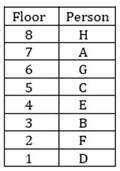
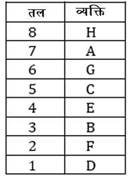
Q.3. 3
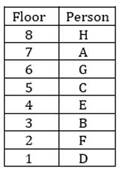

Q.4. 5

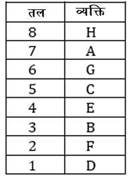
Q.5. 2
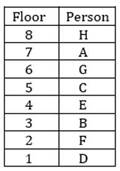
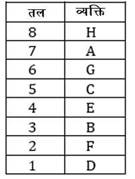
Q.6. 2
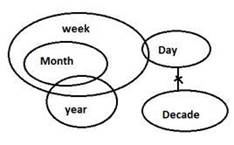

Q.7. 2
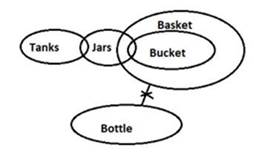

Q.8. 4


Q.9. 1
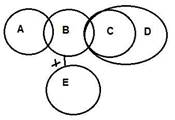
Q.10. 5
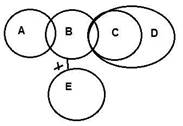





0 comments:
Post a Comment
MAHENDRA GURU